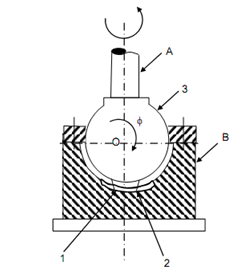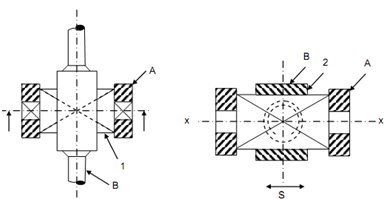Determines degrees of freedom:
Determines degrees of freedom for kinematic pairs illustrated in Figure (a) & (b).

(a)

(a) (c)
Solution:
(1) Link A contain a ball end through sphere at surface 3 & round cylindrical pin 1 sliding along circular groove 2 of width equal to the diameter of pin. There is turning motion 'θ' along axis y-y of link A with respect to link B and as well another turning motion 'φ' along axis passing through O of the sphere & perpendicular to groove 2 and they are independent. Thus, this kinematic pair contains two degrees of freedom.
(2) Link A contain a sliding member 1 of rectangular cross-section and this fits in rectangular hole 2 of link B. There is sliding motion about common axis x-x of link A with respect to link B and it can be represented by a coordinate 's'. Thus, this kinematic pair contains one degree of freedom.